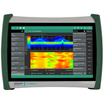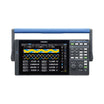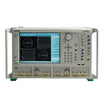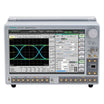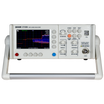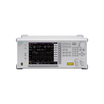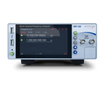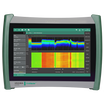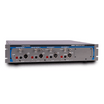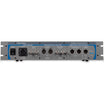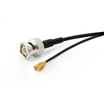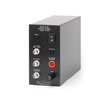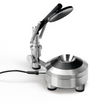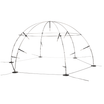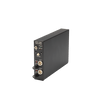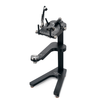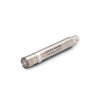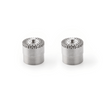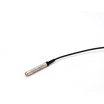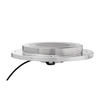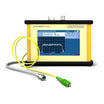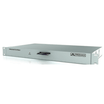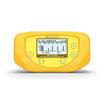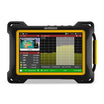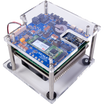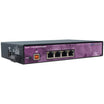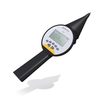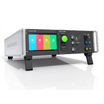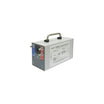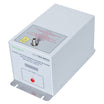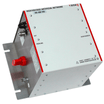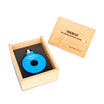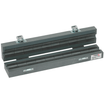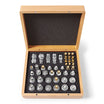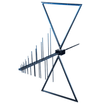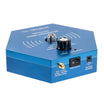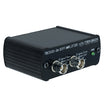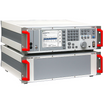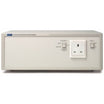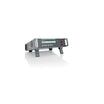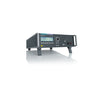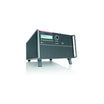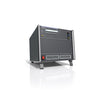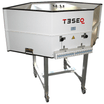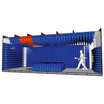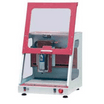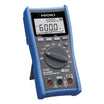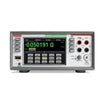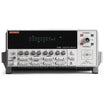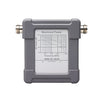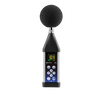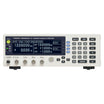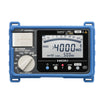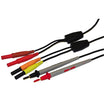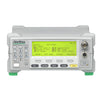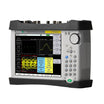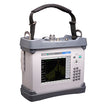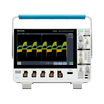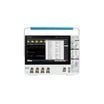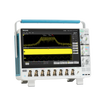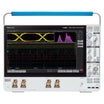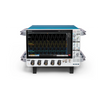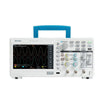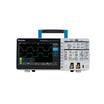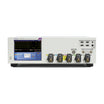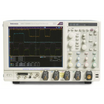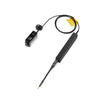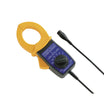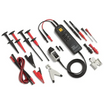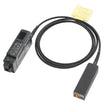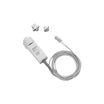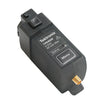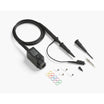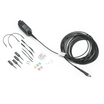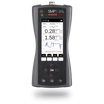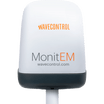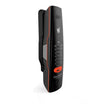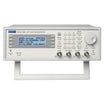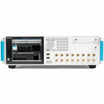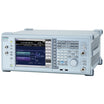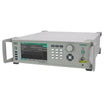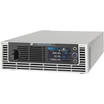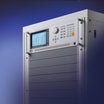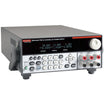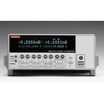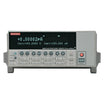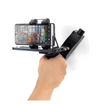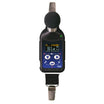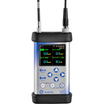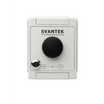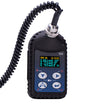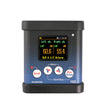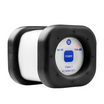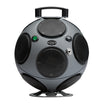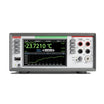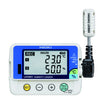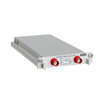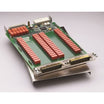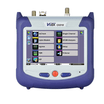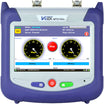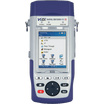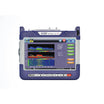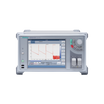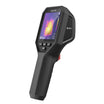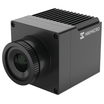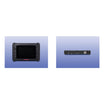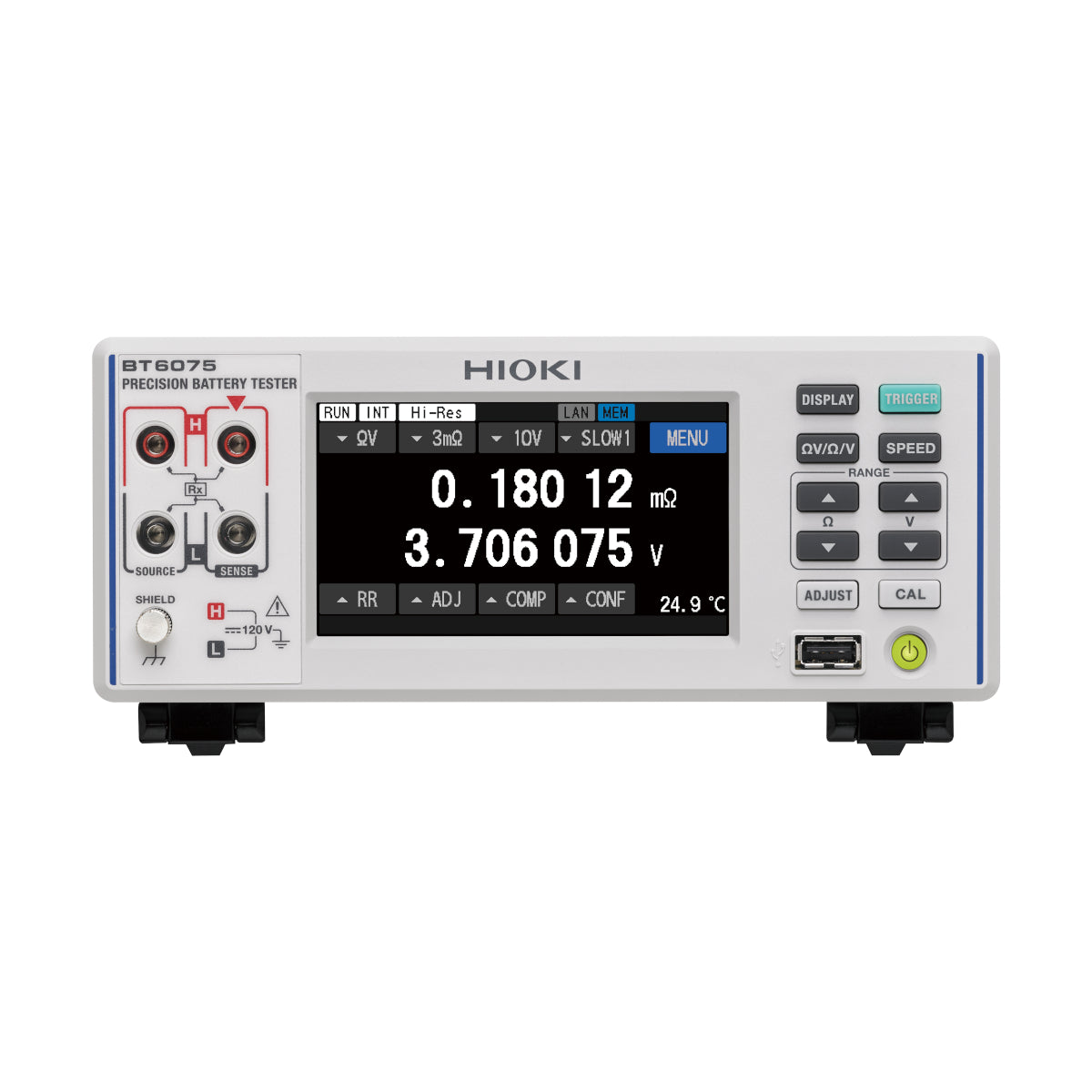
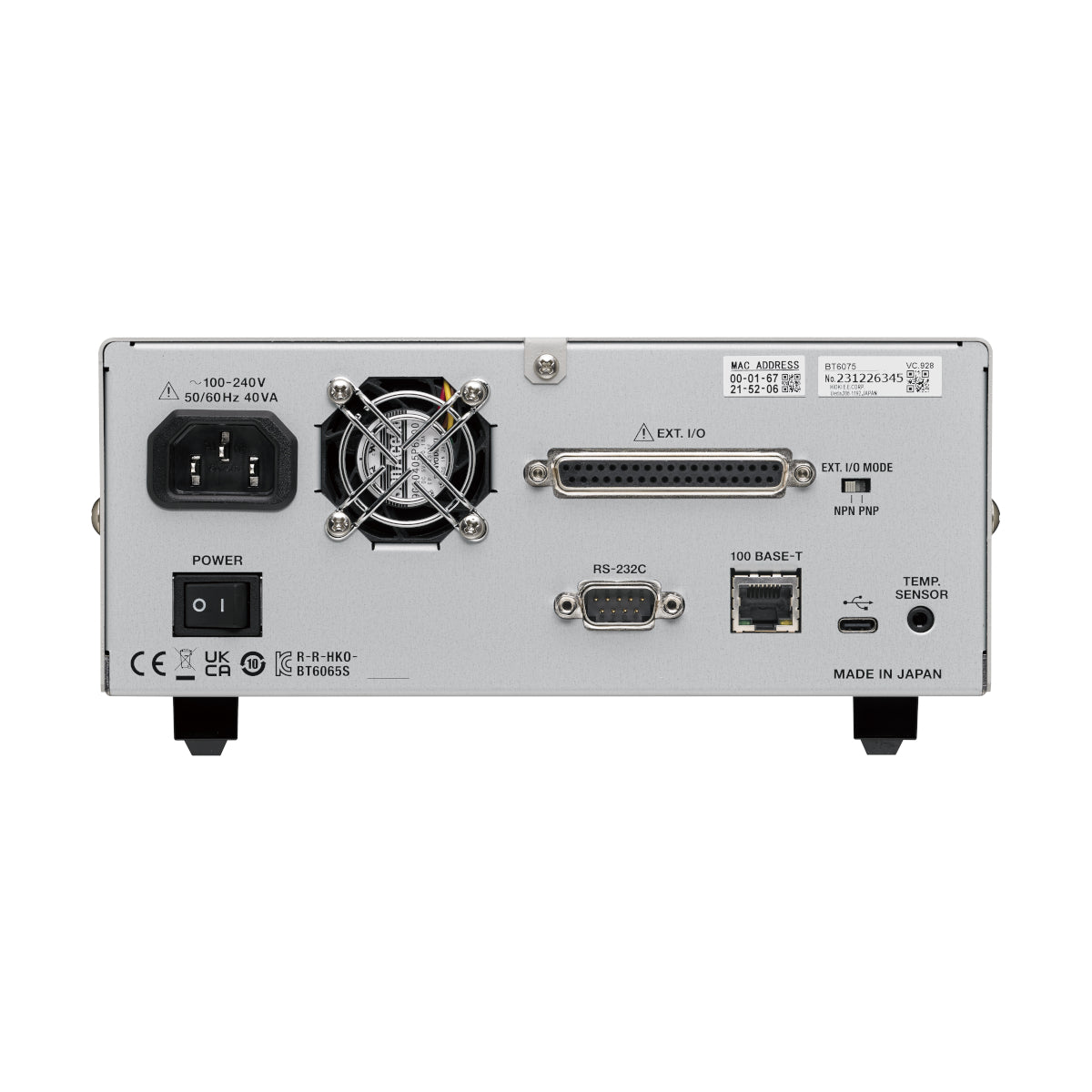
Hioki BT6075 Precision Battery Tester
Use our chat for personal support or contact us via +45 31 33 18 19 or salg@GOmeasure.dk
- Beginning- and end-of-line (BOL, EOL) test. For high-precision cell grading.
- Voltage display: 7-1/2 digits
- Max. DCV resolution: 1 µV
- Max. AC-IR resolution: 0.01 µΩ
Discover the possibilities
More information
Description
The Precision Battery Tester BT6065 and BT6075 are designed for OCV/AC-IR testing of high-capacity EV battery cells with low internal resistance. The extremely high resolution enables these models to perform advance cell-grading. These testers powerfully facilitate the creation of reliable and efficient OCV/IR testing systems with their innovative features and capability of high-speed testing.
Key Features
- Industry's most accurate & high-speed OCV/IR test performance
- Shorter testing times while maintaining exceptional reproducibility
- Two testers work in tandem without interference
- Channel-specific correction and optional multiplexer
- Supports seamless setup of inspection systems
- High durability and long-term, stable test system operations
Exceptional reproducibility for AC-IR and DCV measurements
Excellent resistance measurement resolution and accuracy
AC-IR offers a 10 nΩ resolution.
At a measurement current of 300 mA, stable measurement data is obtained with an excellent SN ratio suitable for inspecting low-resistance batteries.
Common for both the BT6065 and BT6075
- ±0.08% rdg. ±0.08 µΩ (measurement current 300 mA)
- ±0.08% rdg. ±0.5 µΩ (measurement current 100 mA)
AC-IR comparison
Voltage measurement accuracy comparable to a high-precision voltmeter
No additional voltmeter is needed for OCV/IR testing.
Both models, one with 7-1/2 digits (resolution of 1 µV) and the other with 6-1/2 digits (resolution of 10 µV) feature unparalleled measurement accuracy.
BT6075
- 7-1/2 Digits (resolution of 1 µV)
- ±0.0012% rdg. ±11 µV
BT6065
- 6-1/2 Digits (resolution of 10 µV)
- ±0.002% rdg. ±20 µV
Delivers easy, reliable parallel-testing
Stable measurement with the MIR mode (mutual interference reduction)
Ordinarily, mutual interference causes measured values to fluctuate when making simultaneous measurements with two battery testers placed in close proximity. The MIR mode reduces mutual interference to ensure stable measurement. The feature makes possible accurate, high-speed parallel-testing with two testers.
- No need for additional accessories like sync cables
- Unlike an older technology known as pulse output functionality, the MIR mode facilitates reliable parallel testing.
Accurately compensating for the effects of eddy currents caused by adjacent batteries
Compensation of individual channels with referential adjustment
When measuring rows of batteries in a tray, eddy currents occurring in the metal enclosures of adjacent batteries cause measurement error.
The referential adjustment function, which accurately compensates for the effects of eddy currents by using actual batteries as a reference, allows more accurate measurement.
- Referential adjustment: up to 528 channels
- Adjustment data for up to six batteries (6 × 528 channels) can be saved on the instrument using its "panel save" feature.
Improving the long-term reliability of testing systems
Significantly improving route resistance tolerance
Route resistance refers to the total value of wiring resistance and probe contact resistance in a given testing system. Since the BT6065 and BT6075 has high route resistance tolerance, it provides high durability in the face of probe deterioration and increased relay contact resistance. This prevents abrupt testing system stoppages while improving up-time.
- 50 Ω: with measurement current of 100 mA or less (all ranges)
- 10 Ω: with measurement current of 300 mA (3 mΩ range only)
Monitoring route resistance and displaying a warning before a measurement error occurs
Continuously monitoring for errors with the route resistance monitor
The route resistance monitor displays individual wiring route resistance values for 4-terminal measurement. This feature lets you continuously watch for wiring errors like probe wear and wire breaks. The feature can predict maintenance needs and lower operating costs by helping you make numerically-based decisions as to which probe needs to be replaced.
- Dual threshold settings (WARNING, FAIL)
- Improved testing reliability by simultaneously measuring route resistance for Ω and V
Seamless system integration
Command compatibility mode
Communication commands from the previous BT3562A model can be used without modification. As a result, you can replace just the battery testers and verify proper operation of newly installed equipment right away.
Specifications
Basic specifications
Accuracy guaranteed: 1 year
| Resistance measurement ranges (HIGH RESOLUTION ON) | [Range (Measurement current), Accuracy (SLOW2), Maximum display value, Resolution] 3 mΩ (300 mA), ±0.08% rdg. ±0.08 μΩ, 5.10000 mΩ, 0.01 μΩ 3 mΩ (100 mA), ±0.08% rdg. ±0.50 μΩ, 5.10000 mΩ, 0.01 μΩ 30 mΩ (100 mA), ±0.08% rdg. ±0.5 μΩ, 51.0000 mΩ, 0.1 μΩ 300 mΩ (10 mA), ±0.08% rdg. ±5 μΩ, 510.000 mΩ, 1 μΩ 3 Ω (1 mA), ±0.10% rdg. ±50 μΩ, 5.10000 Ω, 10 μΩ 30 Ω (100 μA), ±0.15% rdg. ±0.5 mΩ, 51.0000 Ω, 100 μΩ Measurement-current frequency: 1 kHz ±0.2 Hz Additional accuracy deterioration Temperature coefficient: add the following value to the measurement accuracy if the temperature is 0°C to 18°C or 28°C to 40°C: (measurement accuracy × 0.1) / °C Addition when resistance measurement MIR mode is enabled: add ±0.01% rdg. to the resistance measurement accuracy. |
|---|---|
| DC-voltage measurement range | [Product model: Range, SLOW2, Maximum display value, Resolution] BT6065: 10 V, ±0.002% rdg. ±20 μV, ±12.00000 V, 10 μV BT6065: 100 V, ±0.004% rdg. ±0.6 mV, ±120.0000 V, 100 μV BT6075: 10 V, ±0.0012% rdg. ±11 μV, ±12.000000 V, 1 μV BT6075: 100 V, ±0.003% rdg. ±0.60 mV, ±120.00000 V, 10 μV Additional accuracy deterioration Temperature coefficient: add the following value to the measurement accuracy if the temperature is 0°C to 18°C or 28°C to 40°C: (measurement accuracy × 0.1) / °C |
| Temperature measurement range | Range: -10.0°C to 60.0°C (14°F to 140°F) Accuracy (instrument + Z2005): ±0.5°C (measurement temperature of 10.0°C to 40.0°C) ±1.0°C (measurement temperature of -10.0°C to 9.9°C, 40.1°C to 60.0°C) |
| Route resistance measurement range | [Resistance range, Measurement current, Maximum display value] 3 mΩ, 300 mA, 10.0 Ω 3 mΩ, 100 mA, 50.0 Ω 30 mΩ, 100 mA, 50.0 Ω 300 mΩ, 10 mA, 50.0 Ω 3 Ω, 1 mA, 50.0 Ω 30 Ω, 100 μA, 500 Ω |
| Sampling time (*1) | [Power frequency, FAST1, FAST2, MEDIUM1(MED1), MEDIUM2(MED2), SLOW1, SLOW2] 50 Hz, 4 ms, 10 ms, 20 ms, 40 ms, 100 ms, 200 ms 60 Hz, 4 ms, 10 ms, 17 ms, 33 ms, 100 ms, 200 ms *1: All common to measurement functions ΩV, Ω, and V. |
| Response time | Approx. 8 ms (when measuring only resistance and voltage of a 4 V battery) |
| Functions | Averaging (up to 256 times), contact check, resistance self calibration, DC voltage self-calibration, zero adjustment (528 channels), referential adjustment (528 channels), route resistance monitor, resistance measurement MIR mode, comparator, command compatibility (BT3562A Battery HiTester compatible), panel save (number of savable sets: 6), command monitor, EXT. I/O test |
| Interface | LAN (10BASE T/100BASE-T, TCP/IP), USB (COM mode, Connector Type-C), USB (MEM mode, Connector Type-A, the Z4006 USB Drive is used), RS-232C (9600 bps, 19200 bps, 38400 bps), EXT. I/O |
| Power supply | Rated supply voltage: 100 V to 240 V AC Rated power-supply frequency: 50 Hz, 60 Hz Maximum rated power: 40 VA |
| Dimensions and weight | Approx. 215W × 88H × 313D mm (8.5W × 3.5H × 12.3D in.) Approx. 3.1 kg (6.8 lb.) (excluding protrusions) |
| Included accessories | Power cord × 1, Startup Guide × 1, Operating Precautions × 1 |
Documents
Options
Video
The Precision Battery Tester BT6065 and BT6075 are designed for OCV/AC-IR testing of high-capacity EV battery cells with low internal resistance. The extremely high resolution enables these models to perform advance cell-grading. These testers powerfully facilitate the creation of reliable and efficient OCV/IR testing systems with their innovative features and capability of high-speed testing.
Key Features
- Industry's most accurate & high-speed OCV/IR test performance
- Shorter testing times while maintaining exceptional reproducibility
- Two testers work in tandem without interference
- Channel-specific correction and optional multiplexer
- Supports seamless setup of inspection systems
- High durability and long-term, stable test system operations
Exceptional reproducibility for AC-IR and DCV measurements
Excellent resistance measurement resolution and accuracy
AC-IR offers a 10 nΩ resolution.
At a measurement current of 300 mA, stable measurement data is obtained with an excellent SN ratio suitable for inspecting low-resistance batteries.
Common for both the BT6065 and BT6075
- ±0.08% rdg. ±0.08 µΩ (measurement current 300 mA)
- ±0.08% rdg. ±0.5 µΩ (measurement current 100 mA)
AC-IR comparison
Voltage measurement accuracy comparable to a high-precision voltmeter
No additional voltmeter is needed for OCV/IR testing.
Both models, one with 7-1/2 digits (resolution of 1 µV) and the other with 6-1/2 digits (resolution of 10 µV) feature unparalleled measurement accuracy.
BT6075
- 7-1/2 Digits (resolution of 1 µV)
- ±0.0012% rdg. ±11 µV
BT6065
- 6-1/2 Digits (resolution of 10 µV)
- ±0.002% rdg. ±20 µV
Delivers easy, reliable parallel-testing
Stable measurement with the MIR mode (mutual interference reduction)
Ordinarily, mutual interference causes measured values to fluctuate when making simultaneous measurements with two battery testers placed in close proximity. The MIR mode reduces mutual interference to ensure stable measurement. The feature makes possible accurate, high-speed parallel-testing with two testers.
- No need for additional accessories like sync cables
- Unlike an older technology known as pulse output functionality, the MIR mode facilitates reliable parallel testing.
Accurately compensating for the effects of eddy currents caused by adjacent batteries
Compensation of individual channels with referential adjustment
When measuring rows of batteries in a tray, eddy currents occurring in the metal enclosures of adjacent batteries cause measurement error.
The referential adjustment function, which accurately compensates for the effects of eddy currents by using actual batteries as a reference, allows more accurate measurement.
- Referential adjustment: up to 528 channels
- Adjustment data for up to six batteries (6 × 528 channels) can be saved on the instrument using its "panel save" feature.
Improving the long-term reliability of testing systems
Significantly improving route resistance tolerance
Route resistance refers to the total value of wiring resistance and probe contact resistance in a given testing system. Since the BT6065 and BT6075 has high route resistance tolerance, it provides high durability in the face of probe deterioration and increased relay contact resistance. This prevents abrupt testing system stoppages while improving up-time.
- 50 Ω: with measurement current of 100 mA or less (all ranges)
- 10 Ω: with measurement current of 300 mA (3 mΩ range only)
Monitoring route resistance and displaying a warning before a measurement error occurs
Continuously monitoring for errors with the route resistance monitor
The route resistance monitor displays individual wiring route resistance values for 4-terminal measurement. This feature lets you continuously watch for wiring errors like probe wear and wire breaks. The feature can predict maintenance needs and lower operating costs by helping you make numerically-based decisions as to which probe needs to be replaced.
- Dual threshold settings (WARNING, FAIL)
- Improved testing reliability by simultaneously measuring route resistance for Ω and V
Seamless system integration
Command compatibility mode
Communication commands from the previous BT3562A model can be used without modification. As a result, you can replace just the battery testers and verify proper operation of newly installed equipment right away.
Basic specifications
Accuracy guaranteed: 1 year
| Resistance measurement ranges (HIGH RESOLUTION ON) | [Range (Measurement current), Accuracy (SLOW2), Maximum display value, Resolution] 3 mΩ (300 mA), ±0.08% rdg. ±0.08 μΩ, 5.10000 mΩ, 0.01 μΩ 3 mΩ (100 mA), ±0.08% rdg. ±0.50 μΩ, 5.10000 mΩ, 0.01 μΩ 30 mΩ (100 mA), ±0.08% rdg. ±0.5 μΩ, 51.0000 mΩ, 0.1 μΩ 300 mΩ (10 mA), ±0.08% rdg. ±5 μΩ, 510.000 mΩ, 1 μΩ 3 Ω (1 mA), ±0.10% rdg. ±50 μΩ, 5.10000 Ω, 10 μΩ 30 Ω (100 μA), ±0.15% rdg. ±0.5 mΩ, 51.0000 Ω, 100 μΩ Measurement-current frequency: 1 kHz ±0.2 Hz Additional accuracy deterioration Temperature coefficient: add the following value to the measurement accuracy if the temperature is 0°C to 18°C or 28°C to 40°C: (measurement accuracy × 0.1) / °C Addition when resistance measurement MIR mode is enabled: add ±0.01% rdg. to the resistance measurement accuracy. |
|---|---|
| DC-voltage measurement range | [Product model: Range, SLOW2, Maximum display value, Resolution] BT6065: 10 V, ±0.002% rdg. ±20 μV, ±12.00000 V, 10 μV BT6065: 100 V, ±0.004% rdg. ±0.6 mV, ±120.0000 V, 100 μV BT6075: 10 V, ±0.0012% rdg. ±11 μV, ±12.000000 V, 1 μV BT6075: 100 V, ±0.003% rdg. ±0.60 mV, ±120.00000 V, 10 μV Additional accuracy deterioration Temperature coefficient: add the following value to the measurement accuracy if the temperature is 0°C to 18°C or 28°C to 40°C: (measurement accuracy × 0.1) / °C |
| Temperature measurement range | Range: -10.0°C to 60.0°C (14°F to 140°F) Accuracy (instrument + Z2005): ±0.5°C (measurement temperature of 10.0°C to 40.0°C) ±1.0°C (measurement temperature of -10.0°C to 9.9°C, 40.1°C to 60.0°C) |
| Route resistance measurement range | [Resistance range, Measurement current, Maximum display value] 3 mΩ, 300 mA, 10.0 Ω 3 mΩ, 100 mA, 50.0 Ω 30 mΩ, 100 mA, 50.0 Ω 300 mΩ, 10 mA, 50.0 Ω 3 Ω, 1 mA, 50.0 Ω 30 Ω, 100 μA, 500 Ω |
| Sampling time (*1) | [Power frequency, FAST1, FAST2, MEDIUM1(MED1), MEDIUM2(MED2), SLOW1, SLOW2] 50 Hz, 4 ms, 10 ms, 20 ms, 40 ms, 100 ms, 200 ms 60 Hz, 4 ms, 10 ms, 17 ms, 33 ms, 100 ms, 200 ms *1: All common to measurement functions ΩV, Ω, and V. |
| Response time | Approx. 8 ms (when measuring only resistance and voltage of a 4 V battery) |
| Functions | Averaging (up to 256 times), contact check, resistance self calibration, DC voltage self-calibration, zero adjustment (528 channels), referential adjustment (528 channels), route resistance monitor, resistance measurement MIR mode, comparator, command compatibility (BT3562A Battery HiTester compatible), panel save (number of savable sets: 6), command monitor, EXT. I/O test |
| Interface | LAN (10BASE T/100BASE-T, TCP/IP), USB (COM mode, Connector Type-C), USB (MEM mode, Connector Type-A, the Z4006 USB Drive is used), RS-232C (9600 bps, 19200 bps, 38400 bps), EXT. I/O |
| Power supply | Rated supply voltage: 100 V to 240 V AC Rated power-supply frequency: 50 Hz, 60 Hz Maximum rated power: 40 VA |
| Dimensions and weight | Approx. 215W × 88H × 313D mm (8.5W × 3.5H × 12.3D in.) Approx. 3.1 kg (6.8 lb.) (excluding protrusions) |
| Included accessories | Power cord × 1, Startup Guide × 1, Operating Precautions × 1 |

